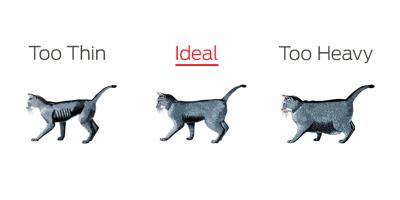
Just like it's important that you brush and floss daily and see a dentist on a regular basis, your cat's dental health needs attention too. Whether you have a new kitten and you want to make sure their oral care gets off on the right paw or you're dealing with an older cat with suspected dental issues, here's everything you need to know when it comes to how to take care of your cat's teeth.
Cat Dental Health
Cats get their first teeth when they are around three to four weeks old. These are called milk teeth, and they are almost transparent in colour and extremely sharp — as anyone who's been accidentally nipped already knows. When your kitten is around 4 months old, she will start losing her milk teeth and gaining her adult teeth. By the time she is 9 months old, your cat will have a full set of permanent adult teeth.
Signs of a Possible Dental Problem
One of the first warning signs that your cat has dental problems is bad breath. While it's normal for your cat to have a little bit of mouth odour occasionally, especially after eating, chronic bad breath can be a sign of infection or dental disease and is worth discussing with your vet.
Another key sign is buildup on the teeth. Plaque and tartar builds up on cats' teeth the same way it does for humans if they don't brush. While it may seem like the main issue with this is aesthetic, plaque buildup can actually cause dental disease and lead to further problems such as kidney and heart issues. Yellowish-brown teeth, red or bleeding gums and chronic drooling are all indications of a dental problem.
While many cats won't show any signs of dental issues, even in severe cases, some cats will stop eating, may seem to be dropping food out of their mouths more frequently or may be only chewing on one side. If you notice any change in eating habits for your cat or she suddenly seems to be losing weight, a vet checkup is the next move.
In very severe cases, your cat's teeth may actually start to fall out. This happens as a result of periodontal gum disease, in which the plaque builds up on the gum line and causes the gum to pull back from the teeth. This loosens the tooth and makes it easier to fall out. Tooth loss related to dental issues is more common in senior cats.
How to Take Care of Your Cat's Teeth
The earlier you can make regular dental care part of your cat's routine, the better. When you first get a kitten, make a point of touching around the mouth on the inside and outside to get them familiar with the feeling. This will also make it easier for your vet to do a thorough exam during their annual visit. Regular veterinary cleanings and at-home brushing can help stop cat dental health issues before they start. Here's what you need to know about both.
Regular Veterinary Cleanings
Your vet will perform a full-body exam during your cat's yearly checkup appointments, and this includes looking at her teeth. If plaque and tartar has started to build up, your vet may recommend an ultrasonic cleaning, which is done in office. The vet uses a special tool to descale the teeth using gentle vibrations, which help remove tartar and plaque without causing any issues on the surface of the teeth. Many vets recommend yearly maintenance cleanings, but if you suspect your cat has a dental issue or is prone to chronic buildup, your vet may want to discuss other options.
At-Home Brushing
Brushing your cat's teeth may seem like a daunting task, but it's one of most important things you can do to support your cat's overall oral health. Kittens catch on to the process fairly quickly, but an older cat may be more challenging.
Start by using a child-sized toothbrush or one specifically designed for cats, and always use a toothpaste made for felines. Dampen the toothbrush and, using just a small amount of toothpaste, start to brush the outer surfaces of the upper teeth in a gentle, circular motion. This is the area most prone to plaque buildup, and starting here helps you get the most benefits from your brushing session if your cat isn't very cooperative. Once your cat is used to this, start working on brushing the inner surfaces and lower and back teeth.
Here are some tips for successfully brushing your cat's teeth:
- If you have more than one pet, get them each a toothbrush to avoid transmitting bacteria during the brushing process.
- If your cat doesn't like to have their teeth brushed, wrap them gently in a towel first or brush the teeth with the cat's back toward you.
- Put a little tuna oil on the toothbrush to entice your cat to cooperate.
- Pick a time when you're both relaxed and calm, and try to stick to a brushing schedule so your cat gets used to it and knows what to expect.
- Give your cat a treat or two during the process to up the reward factor.
- Start slowly, even if it's just a few seconds at a time. It's better to take a few weeks to get to full brushing than scare your cat and make it impossible to brush at all.
- If you're unsure about proper brushing technique, ask your vet to show you how at your next appointment.
Taking care of your cat's dental health is important, and there are many resources available to help you know what's normal and what's not and what to do about. Find out more about cat behaviour and health.
Related articles



